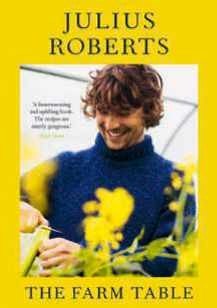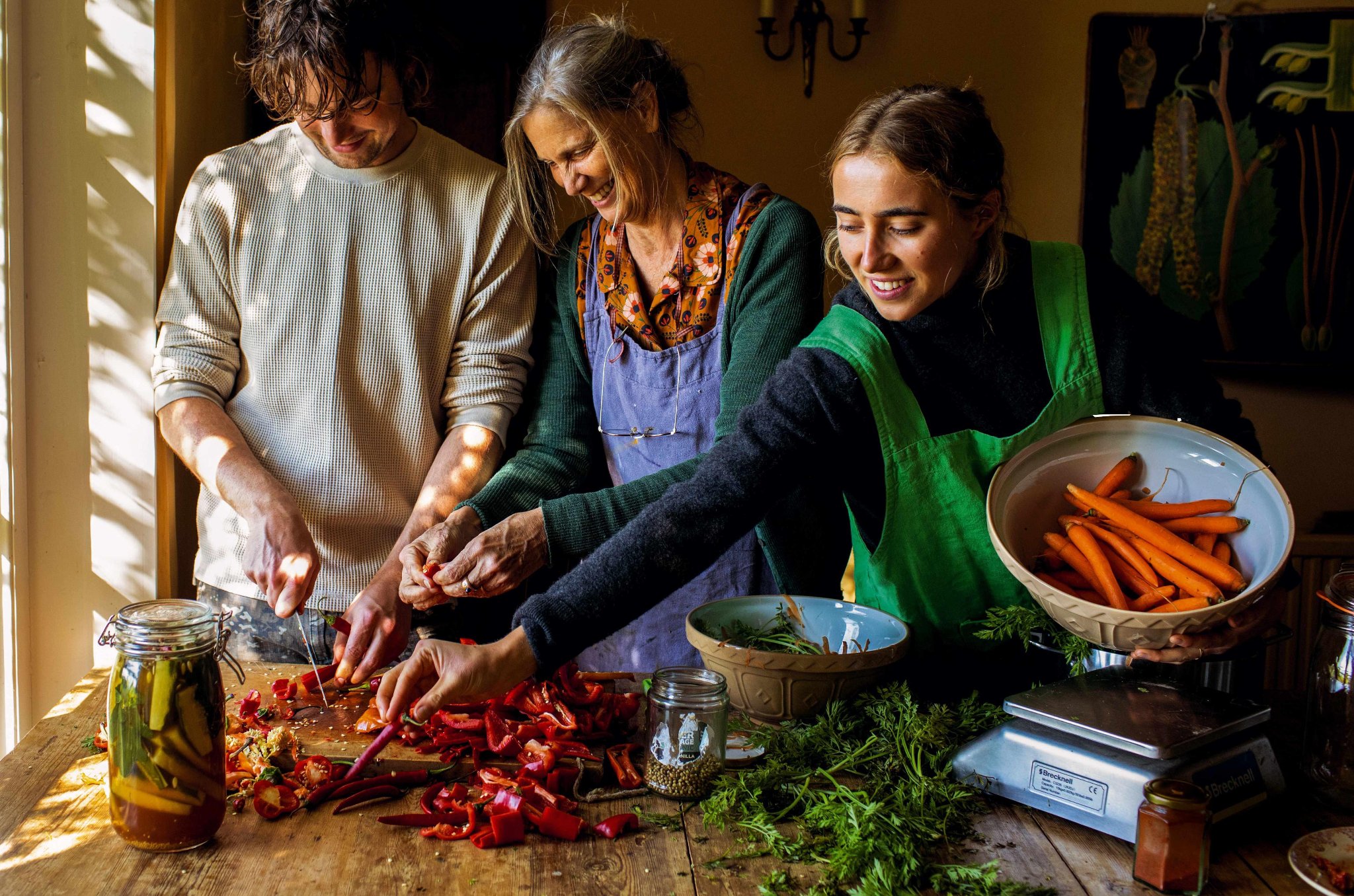
Autumn’s feast
Smallholder and chef Julius Roberts celebrates the beauty and bounty of the season on his Dorset farm, and offers three deliciously warming recipes from his new cookbook The Farm Table
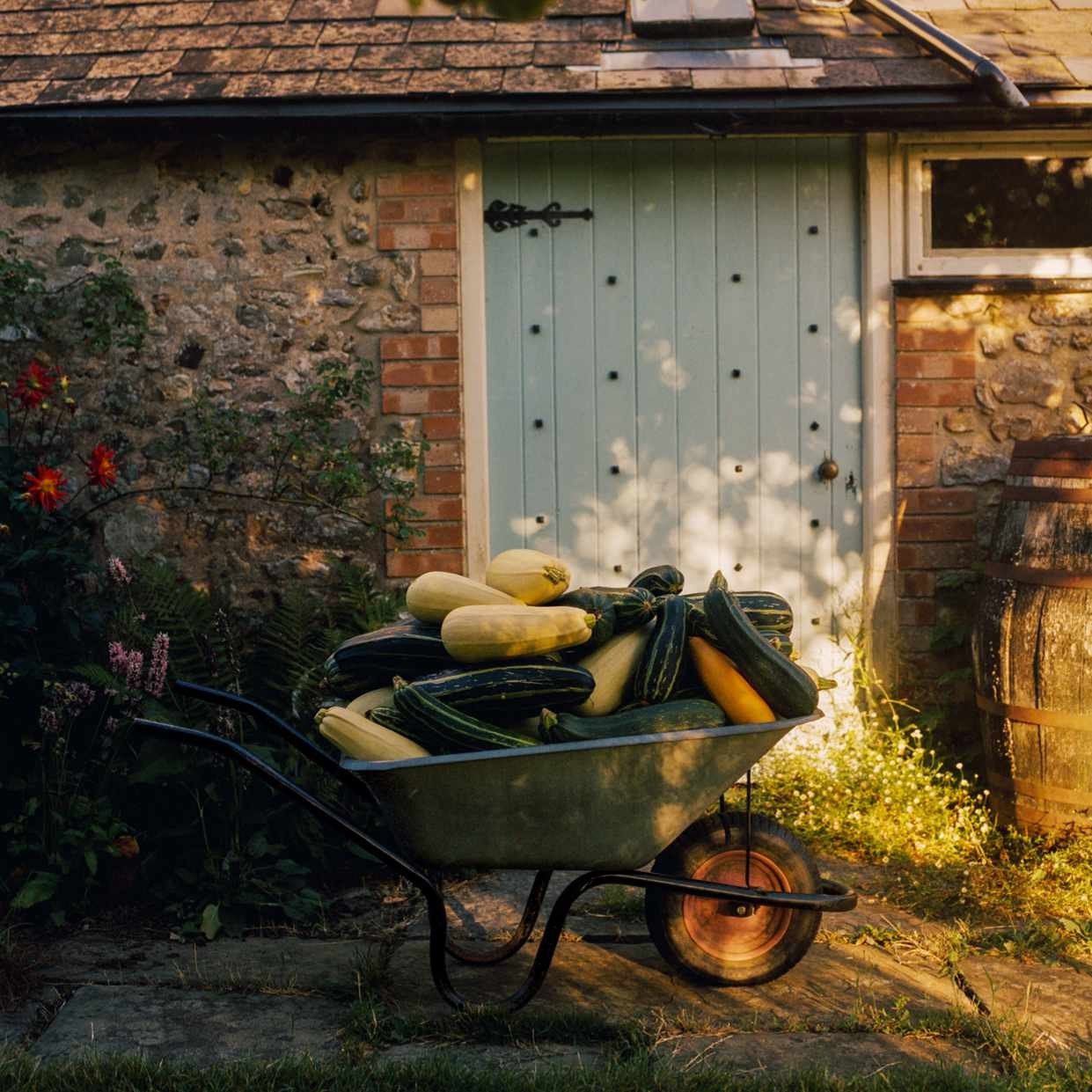
Autumn, much like spring, is a season of stark transition. If you were to jump from the beginning to the end, the change would be vast, but it’s a season that begins almost imperceptibly and much of autumn is a time of harvest and plenty, as we make the most of tomatoes, courgettes and fresh herbs before the leaner days of winter return.
Hedges swell with dark fruit and purple fingers gather blackberries by the basket for pies and crumbles. The warm autumn rains have the dry summer grasses growing again and my sheep fatten in the fields as their fleeces begin to thicken ahead of winter. Our neighbour brings his cows down through our higher meadows to pull at the long pasture and spread the wildflower seeds. Sitting among them, I love their peaceful presence; they watch me curiously with doleful eyes and sweet grassy breath.
Towards the end of autumn, fierce storms begin to batter the farm, tearing the burnished leaves from the trees and flooding the veg patch. We light our first fires of the year and the house smells of warm smoke once again. The tomatoes and courgettes are still going but the food has changed from light and colourful, to slow and comforting against the cold.
THE DAYS CLOSE IN
October shivers into November with iron skies and sharp winds. The grass begins to slow and my breath fogs, marking time to start putting hay out for the animals once again. Apples fall to the ground in droves and so begins the first cider pressing of the year. With our neighbours, we gather them in old compost bags and crush them in old tractorpowered machines to be layered with straw and slowly pressed by great oak beams in yeasty barns.
Finally the dark closes in, and nature is laid bare once more. The daily routine of hay and feed commences again and nourishing pots of broth bubble on the stove. We are back to winter, a time of slowing down and taking stock, waiting until the cycle repeats and thrusts us back into the chaos of spring.
BEETROOT SOUP AND THREE TOPPINGS
This is one of those recipes my family just live off, a dish we return to again and again, at its heart deeply simple and uplifting. Velvety and voluptuous, this soup bubbles away like a cauldron of lava and is wonderfully nourishing. Seasoned with a little cider vinegar to brighten the earthy richness, it’s a dinner party classic I often serve as a starter because of its striking colour, but it’s equally at home eaten by the fireside. I’ve given you three toppings that will bring this soup to life, so you can vary how you eat it depending on what you have to hand.
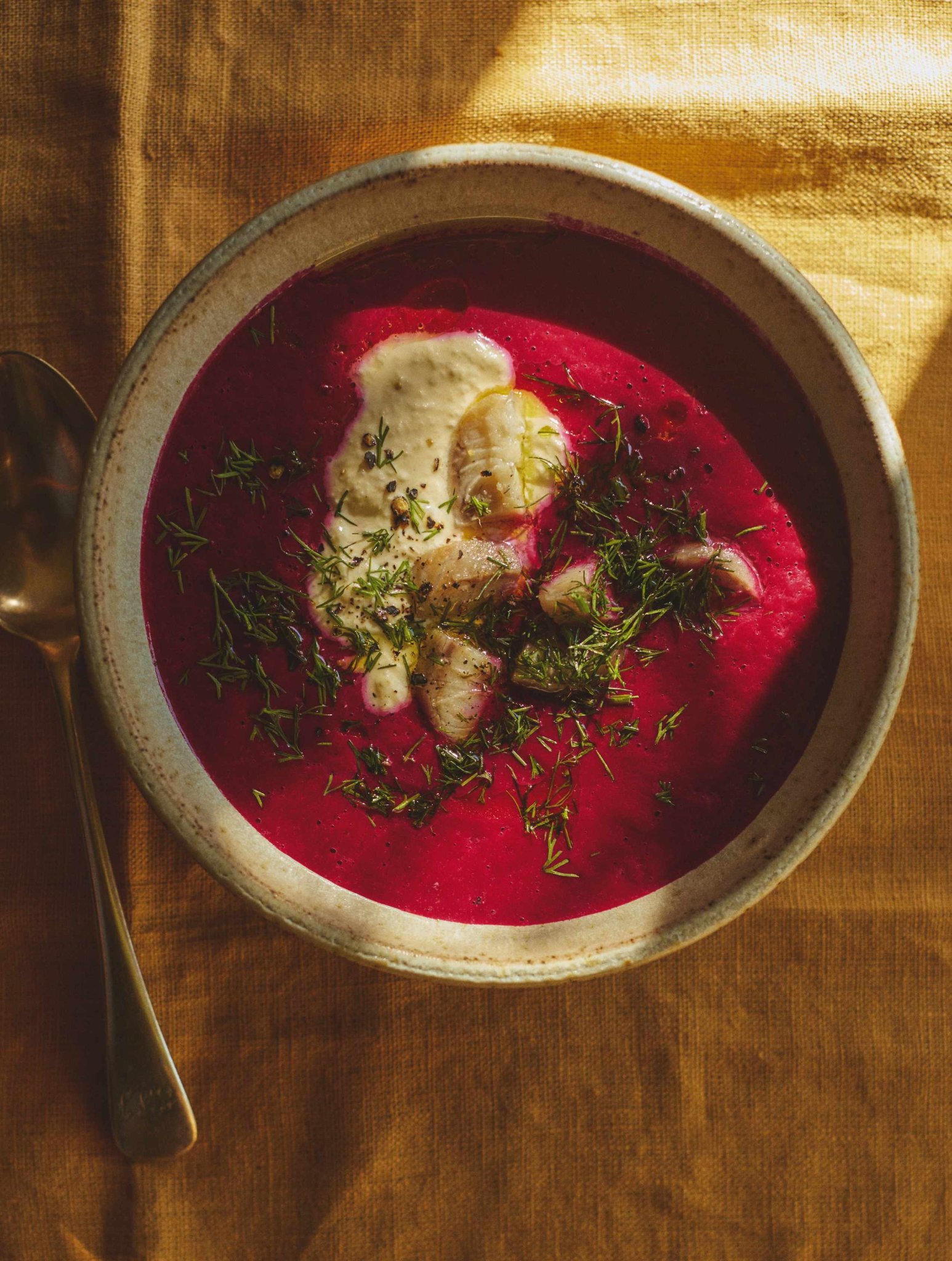
MAKES 8 PROPER BOWLFULS
• 1.5kg beetroots
• 100ml cider vinegar
• 200ml crème fraîche or double cream
YOUR CHOICE OF TOPPING
• A few slices of smoked eel and a dollop of fiery horseradish sauce
• Crumbly goat’s cheese and dill
• Natural yoghurt and toasted cumin seeds
1. Start by giving the beets a good scrub in the sink to remove any grit. Don’t peel or trim the tops; you want them intact, to preserve the vivid colour. Place in a large pan and cover with water, then pour in the vinegar and season with a proper handful of salt. Bring to the boil, then set to a simmer with the lid on for about an hour, until completely tender. You should be able to easily pierce them to the core with a knife.
2. Take the beets out and leave them to cool in a bowl, but keep all the cooking liquor. When cool enough to handle, peel off the skins: they should come away easily with a squeeze from your thumb – I think it’s one of the most satisfying jobs in the kitchen, but wear a pair of Marigolds or your hands will be pink for days.
3. Chop the beetroots into quarters and place in a high-speed blender, then top up with a little of the cooking water and blitz into a thick pourable soup. You might need to do this in two or three batches. Taste as you go, as you don’t want to overdo it with the vinegary water, though the vinegar is a key part of the seasoning and cuts through excessive earthiness. Add the crème fraîche while blitzing in the blender and it will lighten and aerate the soup into a lovely velvety texture. It should taste divine and be the most incredible colour, but make sure to taste and adjust the seasoning to get the balance right.
4. Warm the soup back up in a pan, and finish with your chosen toppings. This keeps in the fridge for up to a week, and you can freeze any leftovers for a rainy day.
ROAST PUMPKIN, BUFFALO MOZZARELLA, SAGE AND HAZELNUTS
This format of beautifully cooked seasonal veg, on a bed of cheese with herbs and toasted nuts, is a very useful thing to know. At Noble Rot, the restaurant where I learnt so much, a version of this dish was always on the menu, whether it be with Roscoff onions in autumn, calçots and romesco in spring, or the mighty Crown Prince pumpkin in winter. The key, of course, is that when cooking something so simple you need to start with quality ingredients, sourced locally and grown with love in the season in which they were meant to be grown. Here the pumpkin is roasted until the sugars begin to caramelise. The toasted nuts exaggerate and complement the nuttiness of the pumpkin, the zing of lemon brings it to life, and the sage brings it back to earth.
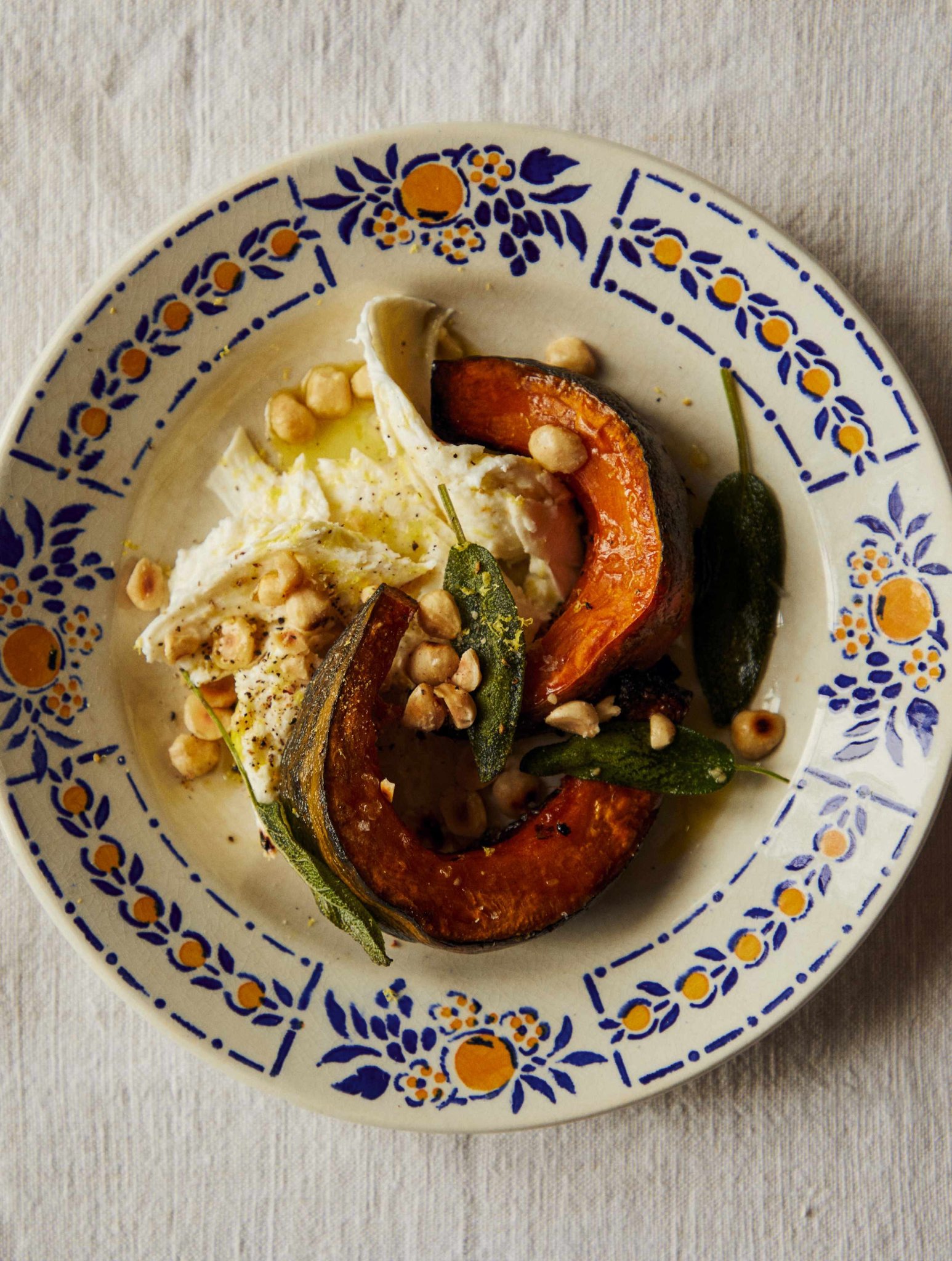
SERVES 4
• 1 pumpkin (Crown Prince is a favourite variety)
• 6 tbsp olive oil
• 50g blanched hazelnuts
• 12 fresh sage leaves
• 250g buffalo mozzarella
• 1 unwaxed lemon
1. Preheat your oven to 200°C fan and line a baking tray with baking parchment. Scrub the pumpkin and cut it into wedges. Toss the wedges with three tablespoons of olive oil, season with salt, then spread on the baking tray and roast for 30–40 minutes, until caramelised and tender. When ready, remove from the oven and scrape off the pumpkin seeds. (I find this much easier to do once the wedges are cooked.)
2. While the pumpkin roasts, add the hazelnuts to a small ovenproof pan and toast in the oven for 10 minutes until golden and crisp, then transfer to a pestle and mortar and lightly crush. Place the pan on a medium heat and add three tablespoons of olive oil. Once shimmering, add the sage leaves and fry for 30–60 seconds, until just crisp, then transfer to a plate lined with kitchen paper.
3. To serve, tear some mozzarella on to each plate and top with a couple of pumpkin wedges. Finish with a generous drizzle of olive oil, the hazelnuts, sage leaves, a little lemon zest and a squeeze of the juice.
APPLE TURNOVERS
From late August through to January we are bombarded by an endless supply of apples. We have cookers and eaters of many flavours, and from October each gust of wind sends a carpet to the ground in a riot of colour. Of the many dishes they are used in, this is an old favourite. Play around with the spices, add a splash of brandy or ginger, orange zest, raisins and almonds… just give them a minute to cool before you tuck in.
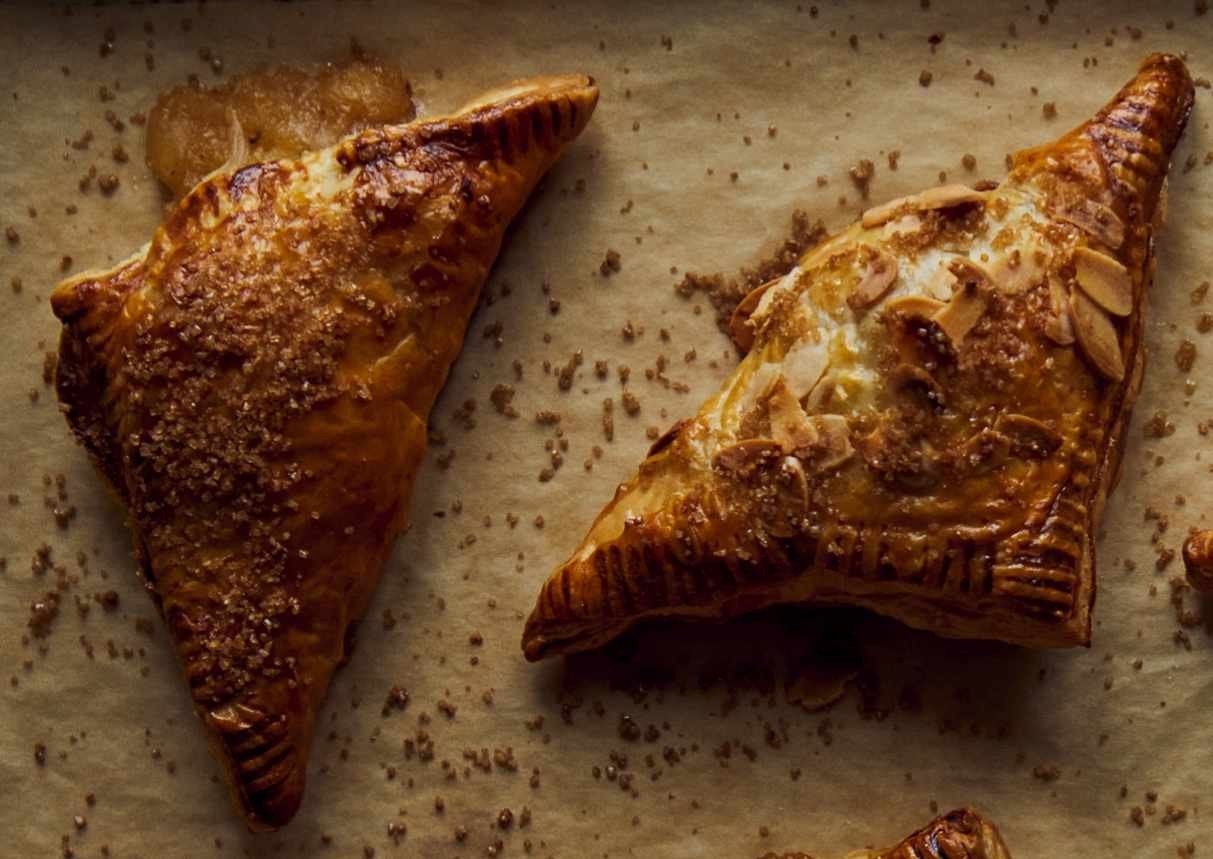
MAKES 6 TURNOVERS
• 4 medium cooking apples
• 30g butter
• 1 tsp ground cinnamon
• ½ nutmeg, grated
• A pinch of ground cloves
• 100g soft brown sugar
• 2 tsp cornflour
• 1 eating apple
• 1 unwaxed lemon
• 1 sheet of puff pastry, or homemade rough puff pastry
• 1 egg
• Demerara sugar, for sprinkling
• Double cream, ice cream or crème fraîche, for serving
1. Peel the cooking apples and cut into quarters, then remove the cores and halve each quarter. Place a pan on a medium heat and add the cooking apples along with the butter, spices and brown sugar. Cook gently until the apples are tender and enveloped in a sticky sauce, but don’t let them turn to mush; texture is important. If you find they’re sticking to the pan, add a little splash of water, but go carefully as you don’t want the mixture to become too runny.
2. After 10–15 minutes, mix the cornflour with two teaspoons of water and add to the apple; cook for a few minutes until the sauce thickens, then turn off the heat. At this point, peel and cube the eating apple and stir it through the cooked apple – this provides a lovely change of texture. Grate in the zest of the lemon and squeeze in the juice of half, then taste and adjust with the rest of the lemon juice as needed. Leave to cool.
3. Roll out a sheet of puff pastry on a piece of baking parchment and cut into six squares. Place a generous dollop of the cooled apple mixture on one half of each square, leaving a 1.5cm edge to seal the pastry later on. I find this is a battle between wanting as much apple as possible and not overfilling, so they can still be sealed. Don’t worry if they’re not immaculate, mine never are. Whisk the egg, brush the edges of the pastry and fold over the other half to form a triangle. Pinch together or press with a fork to seal, then poke a few holes in the top to let out the steam. Transfer to a baking tray and place in the fridge while you preheat your oven to 200°C fan.
4. Remove from the fridge and brush the tops with egg wash, then place in the oven and cook for 20–30 minutes, until the pastry is a deep golden brown.
5. When ready, remove from the oven and sprinkle with Demerara sugar. Leave to cool for 10 minutes, and serve with your favourite form of cream.
